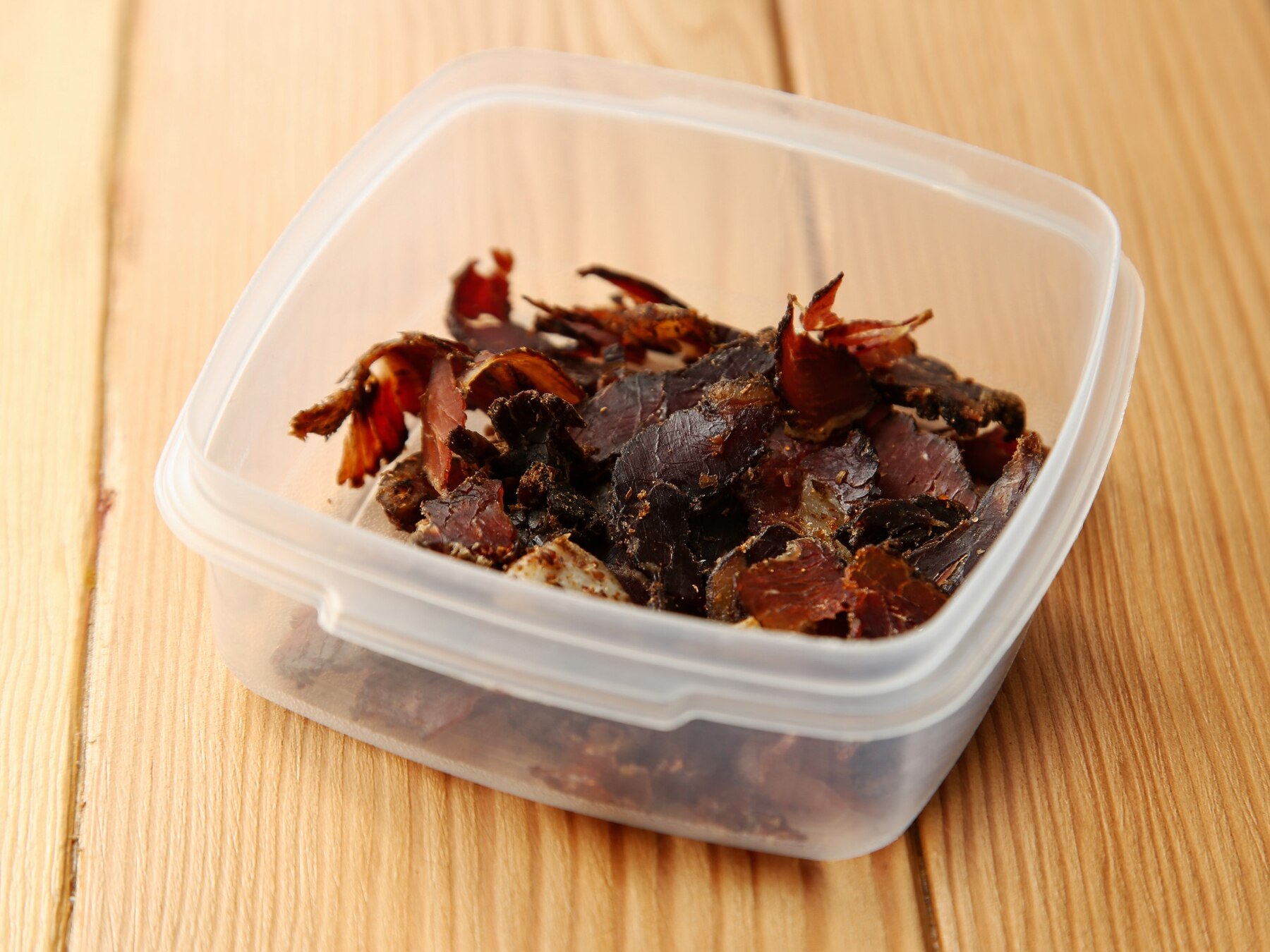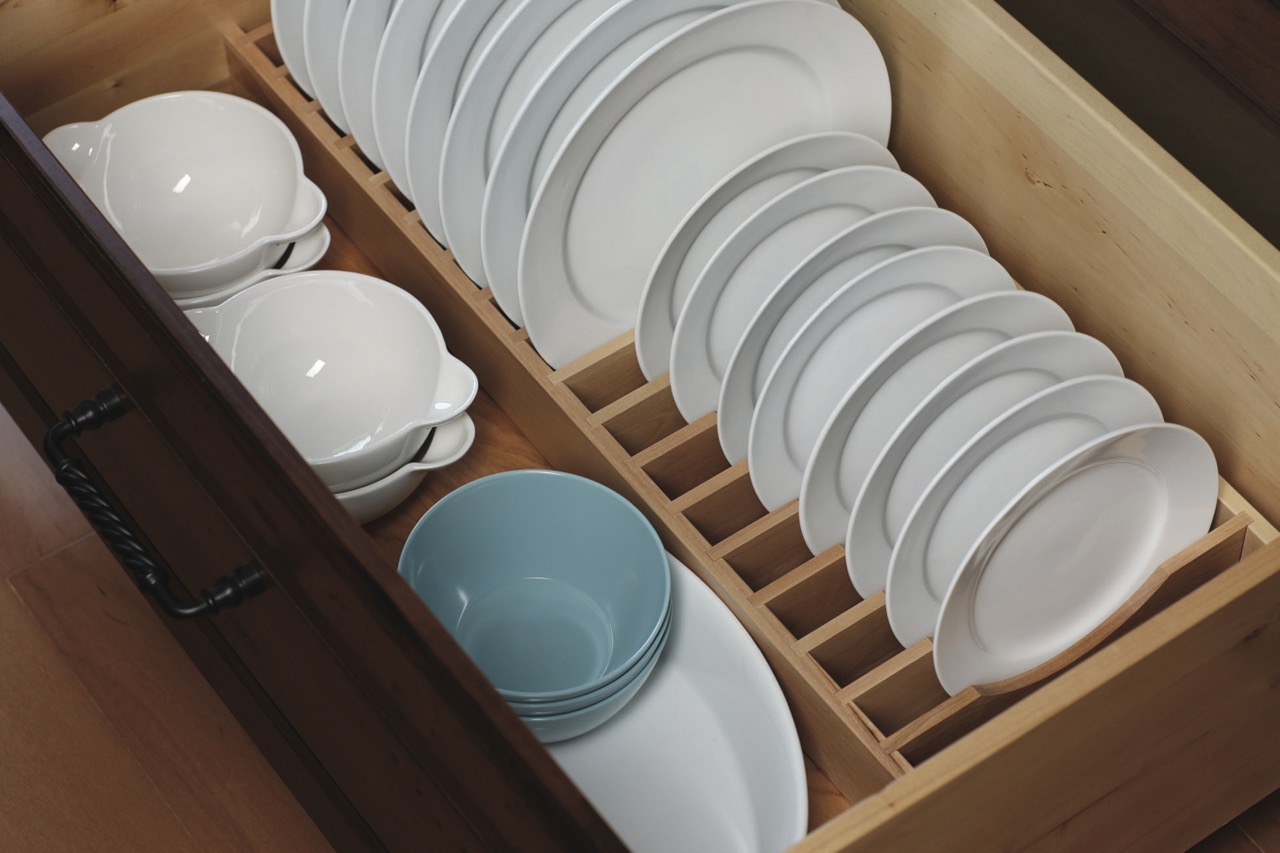

Articles
How To Store A Stethoscope
Modified: February 23, 2024
Discover effective ways to store your stethoscope with these informative articles. Keep your device safe and in top condition with our expert tips and recommendations.
(Many of the links in this article redirect to a specific reviewed product. Your purchase of these products through affiliate links helps to generate commission for Storables.com, at no extra cost. Learn more)
Introduction
In the medical field, a stethoscope is an essential tool that allows healthcare professionals to listen to internal body sounds and diagnose various conditions. Whether you are a doctor, nurse, or medical student, proper care and storage of your stethoscope are crucial to maintain its functionality and longevity.
Storing a stethoscope may seem like a simple task, but it is often overlooked or done incorrectly. Many people make the mistake of leaving their stethoscopes lying around or tossing them into a bag without considering the potential damage that can occur. However, by implementing a few best practices, you can ensure that your stethoscope remains in optimal condition.
In this article, we will explore the importance of proper storage for a stethoscope and provide you with step-by-step instructions on how to store it correctly. By following these guidelines, you can keep your stethoscope clean, protected, and ready for use whenever you need it.
Key Takeaways:
- Proper storage of a stethoscope is crucial for maintaining its functionality, protecting it from damage, and ensuring its longevity. By following the step-by-step guidelines provided in this article, you can store your stethoscope correctly and keep it in optimal condition.
- Regular maintenance and inspection, along with proper cleaning, are crucial for the ongoing care of your stethoscope. By incorporating these practices into your routine, you can detect and address any issues before they worsen, ensuring that your stethoscope remains in excellent working condition.
Read more: How To Store Store-Bought Bread
Why Proper Storage is Important
Proper storage of your stethoscope plays a significant role in maintaining its performance and durability. Here are a few reasons why it is essential to store your stethoscope correctly:
Prevention of Damage: Stethoscopes are sensitive instruments that can be easily damaged if not stored properly. Exposing them to extreme temperatures, moisture, or physical impact can lead to malfunctions or even permanent damage. By storing your stethoscope correctly, you can protect it from potential harm and ensure its longevity.
Maintaining Sound Quality: The primary function of a stethoscope is to amplify and transmit body sounds for examination. Any damage or debris on the diaphragm or tubing can negatively impact the sound quality and accuracy of the readings. Proper storage helps prevent dust, dirt, and other contaminants from accumulating on the stethoscope, ensuring clear and precise sound transmission.
Hygiene and Infection Control: Storing your stethoscope properly is crucial for maintaining hygiene and preventing the spread of infections. Healthcare settings can be breeding grounds for bacteria and other pathogens. By storing your stethoscope in a clean and controlled environment, you minimize the risk of cross-contamination and ensure the safety of both patients and healthcare providers.
Convenience and Accessibility: Proper storage ensures that your stethoscope is readily available when you need it. By having a designated storage place, you can easily locate your stethoscope without wasting time searching for it. This is especially important in medical emergencies or critical situations where every second counts.
Prolonging Equipment Lifespan: Stethoscopes are not inexpensive, and replacing them regularly can be costly. Storing your stethoscope correctly helps extend its lifespan, reducing the need for frequent replacements. By investing a little time and effort in proper storage, you can prolong the life of your stethoscope and maximize its value.
Now that we understand the importance of proper storage, let’s explore the best practices for storing your stethoscope to ensure its longevity and optimal performance.
Best Practices for Storing a Stethoscope
To ensure the longevity and optimal performance of your stethoscope, follow these best practices for storing it:
- Cleaning the Stethoscope: Before storing your stethoscope, it is important to clean it properly. Use a soft cloth or medical-grade disinfectant wipe to gently wipe the diaphragm, earpieces, and tubing to remove any dirt or debris. Avoid using harsh chemicals or abrasive materials that can damage the stethoscope.
- Removing Excess Moisture: It is crucial to thoroughly dry your stethoscope before storing it. Moisture buildup can lead to mold or corrosion, which can negatively impact the functionality of the instrument. Use a dry cloth to wipe off any remaining moisture and ensure that all parts of the stethoscope are completely dry.
- Choosing a Suitable Storage Container: Select a storage container that is clean, durable, and specifically designed for stethoscope storage. Consider using a hard-shell case or a specially designed stethoscope pouch to provide adequate protection against physical damage, dust, and other contaminants.
- Placing the Stethoscope in the Container: Insert the stethoscope into the storage container carefully, making sure that the tubing is not bent or twisted. Place the earpieces and diaphragm in separate compartments within the container to prevent them from rubbing against each other, which can cause wear and tear.
- Securing the Container: Close the storage container securely to prevent the stethoscope from falling out or getting damaged. Look for containers with zipper closures or secure latches that provide a tight seal. This ensures that your stethoscope remains in place and protected during storage.
- Placement in a Safe Location: Store your stethoscope in a clean, dry, and controlled environment. Avoid exposing it to extreme temperatures, humidity, direct sunlight, or chemicals. Find a designated storage area away from pets, children, and any potential hazards to minimize the risk of accidental damage or loss.
- Regular Maintenance and Inspection: Even when stored properly, it is important to regularly inspect and maintain your stethoscope. Check for any signs of wear and tear, loose parts, or damage. Clean and disinfect the stethoscope periodically to ensure its hygiene and functionality.
By following these best practices, you can protect your stethoscope from damage, maintain its sound quality, prevent infections, and prolong its lifespan. Remember, proper storage is a small investment of time and effort that can go a long way in preserving the performance and reliability of your stethoscope.
Step 1: Cleaning the Stethoscope
Cleaning your stethoscope is an important step in maintaining its hygiene and performance. Regular cleaning helps remove dirt, debris, and microorganisms that may have accumulated on the surface of the instrument. Here are the steps to clean your stethoscope:
- Gather the necessary supplies: You will need a soft cloth or medical-grade disinfectant wipes, mild soap or cleaning solution, and clean water.
- Detach the earpieces: Start by removing the earpieces from the binaurals (the metal or plastic tubes that connect the earpieces to the tubing). Detaching the earpieces makes it easier to clean and disinfect them.
- Wipe the diaphragm and tubing: Use a soft cloth or medical-grade disinfectant wipe to gently wipe the diaphragm and the entire length of the tubing. This helps remove any visible dirt or debris. Avoid using excessive force or harsh chemicals that may damage the stethoscope.
- Clean the earpieces: Take the detached earpieces and clean them separately. Use a soft cloth dampened with mild soap and water or disinfectant wipes to wipe the earpieces thoroughly. Pay attention to the areas that come into direct contact with the ear to ensure cleanliness.
- Rinse with clean water: After cleaning the diaphragm, tubing, and earpieces, rinse them with clean water to remove any leftover soap or cleaning solution. Ensure that no residue remains on the stethoscope.
- Dry the stethoscope: Use a dry, clean cloth to wipe off any remaining moisture from the stethoscope. Make sure the diaphragm, tubing, and earpieces are completely dry before proceeding to the next step.
- Reassemble the stethoscope: Once the stethoscope is dry, reattach the earpieces onto the binaurals. Ensure they are securely fastened.
By following these simple steps, you can effectively clean your stethoscope and remove any dirt or contaminants that may compromise its performance. It is recommended to clean your stethoscope before and after each use to maintain its hygiene and prolong its lifespan.
Step 2: Removing Excess Moisture
After cleaning your stethoscope, it’s important to ensure that it is completely dry before storing it. Excess moisture, if left unattended, can cause damage or promote the growth of mold and bacteria. Here’s how you can remove excess moisture from your stethoscope:
- Inspect the stethoscope: Check the tubing, diaphragm, and earpieces for any visible moisture. If you notice any dampness, take the necessary steps to dry it.
- Use a clean, dry cloth: Take a soft cloth that is clean and dry. Gently wipe the surface of the stethoscope, including the tubing and diaphragm, to soak up any moisture. Pay close attention to areas where moisture tends to accumulate, such as the earpiece connections and the joints of the tubing.
- Air-dry the stethoscope: In addition to using a cloth, you can also air-dry your stethoscope. Hang it in a clean and well-ventilated area, ensuring that it is not exposed to direct sunlight or excessive heat. Allow the stethoscope to air-dry naturally, which can help eliminate any residual moisture.
- Rotate the stethoscope: To facilitate the drying process, gently rotate the tubing and diaphragm of the stethoscope. This allows air to circulate and helps evaporate moisture that may be trapped in certain areas.
- Inspect for dryness: Once you have wiped and air-dried the stethoscope, inspect it closely to ensure that it is completely dry. Check the tubing, diaphragm, and earpieces to make sure there is no lingering moisture. It is essential to store a completely dry stethoscope to prevent damage or microbial growth.
By following these steps, you can effectively remove excess moisture from your stethoscope and ensure that it is in the best condition for storage. Properly drying your stethoscope after cleaning plays a crucial role in maintaining its integrity and preventing any potential issues associated with moisture.
Read more: How To Store Basil From Grocery Store
Step 3: Choosing a Suitable Storage Container
Choosing the right storage container for your stethoscope is crucial for keeping it safe and protected when not in use. An appropriate storage container helps prevent physical damage, dust, and other contaminants from affecting your stethoscope. Follow these guidelines to select a suitable storage container:
- Size and Design: Choose a container that can comfortably accommodate your stethoscope. Ensure that the dimensions of the container are appropriate for the length of the stethoscope tubing and the size of the diaphragm. Opt for a container with separate compartments or slots for the stethoscope and its accessories, such as spare ear tips or a spare diaphragm.
- Material: Look for a storage container made of durable and protective materials. Hard-shell cases made of impact-resistant materials, such as EVA foam or polycarbonate, offer excellent protection against accidental drops or impacts. Alternatively, you can opt for stethoscope pouches made of sturdy fabric or genuine leather, which can provide cushioning and protection.
- Cleanliness: Ensure that the storage container is clean and free from contaminants. Avoid using containers that have a strong odor or are visibly dirty. Regularly clean the storage container to maintain proper hygiene for your stethoscope.
- Accessibility: Consider a storage container that offers easy access to your stethoscope. Look for containers with zipper closures or secure latches that are easy to open and close. Quick and hassle-free access to your stethoscope can be crucial, especially in emergency situations.
- Portability: If you frequently carry your stethoscope with you, consider a storage container that is compact and lightweight. Look for containers with additional features like a carrying handle or detachable straps for added convenience. Ensure that the container fits comfortably in your bag or coat pocket without causing any damage or added strain.
Remember, the right storage container not only protects your stethoscope from physical damage but also helps keep it clean and organized. By investing in a suitable storage container, you are taking a proactive step towards maintaining the longevity and functionality of your stethoscope.
After each use, clean the diaphragm and ear tips with alcohol wipes. Store the stethoscope in a clean, dry place away from extreme temperatures and direct sunlight to prevent damage.
Step 4: Placing the Stethoscope in the Container
Once you have chosen a suitable storage container for your stethoscope, it’s important to know how to properly place it inside. Proper placement ensures that the stethoscope is secure and protected from any potential damage. Follow these steps to place your stethoscope in the storage container:
- Prepare the container: Ensure that the storage container is clean and free from any debris or contaminants. Wipe the inside of the container with a clean, dry cloth to remove any dust or particles.
- Detach the earpieces: If your stethoscope has detachable earpieces, remove them from the binaurals (the metal or plastic tubes that connect the earpieces to the tubing).
- Position the stethoscope: Carefully place the stethoscope inside the storage container, starting with the tubing. Ensure that the tubing is not bent or twisted to avoid any potential damage or kinks. Position the earpieces and diaphragm in separate compartments within the container to prevent them from rubbing against each other, which can cause wear and tear.
- Arrange any additional accessories: If your storage container has separate compartments or pockets, use them to store any additional accessories like spare ear tips or a spare diaphragm. Keep these items organized and separate from the stethoscope to prevent them from touching or potentially causing damage.
- Keep it secure: Close the storage container securely to ensure that the stethoscope remains in place. Check for containers with zipper closures or secure latches that provide a tight seal. This prevents the stethoscope from falling out or shifting during storage.
Properly placing your stethoscope in the storage container ensures that it is protected from physical damage and kept secure. By following these steps, you can maintain the integrity of your stethoscope and ensure that it is ready for use when you need it.
Step 5: Securing the Container
Securing the storage container for your stethoscope is essential to ensure that it remains protected and intact. A secure container minimizes the risk of the stethoscope falling out or sustaining damage during transport or storage. Follow these steps to secure the container:
- Check the closure mechanism: Ensure that the storage container has a reliable closure mechanism such as a zipper, latch, or snap closure. Test the closure to make sure it securely seals the container.
- Zipper closure: If your storage container has a zipper closure, ensure that it moves smoothly along the track. Make sure the zipper fully closes and that there are no gaps or openings that could allow dust or moisture to enter.
- Latch or snap closure: For containers with latch or snap closures, ensure that the latch or snap is fastened securely. Verify that there are no loose or broken components that could compromise the closure’s effectiveness.
- Inspect for gaps: Carefully inspect the container to ensure there are no gaps or openings that could allow dust, debris, or moisture to enter. Even the smallest opening can compromise the stethoscope’s protection.
- Firmly close the container: Once you have verified that the closure mechanism is intact, firmly close the container to ensure a tight seal. Apply the necessary pressure to secure the closure firmly, but be careful not to apply excessive force that could damage the container or the stethoscope.
By properly securing the container for your stethoscope, you can have peace of mind knowing that your instrument is protected from external elements and potential damage. Taking the time to secure the container ensures that your stethoscope remains in excellent condition and ready for use whenever you need it.
Step 6: Placement in a Safe Location
Once you have secured your stethoscope in its storage container, the next step is to find a safe location to store it. Proper placement ensures that your stethoscope remains protected from potential hazards and is easily accessible when needed. Follow these guidelines for placing your stethoscope in a safe location:
- Clean and dry area: Find a clean and dry area to store your stethoscope. Avoid storing it in areas prone to moisture, such as bathrooms or kitchens, as excess humidity can damage the instrument.
- Away from direct sunlight: Direct sunlight can cause discoloration and damage to the stethoscope material. Choose a storage location away from windows or areas with direct sunlight exposure.
- Temperature control: Extreme temperatures can compromise the integrity of your stethoscope. Avoid storing it in areas that are excessively hot or cold, such as near radiators or air conditioning vents.
- Protection from physical damage: Place the storage container in a location where it is unlikely to be knocked over or struck by other objects. Protect it from accidental damage caused by pets, children, or heavy items.
- Easy accessibility: Store your stethoscope in a location that allows for easy access when needed. Healthcare professionals often require quick access to their stethoscopes in urgent situations, so choose a convenient and easily reachable spot.
- Avoid exposure to chemicals: Keep your stethoscope away from exposure to harmful chemicals or solvents that could damage the materials. Store it in an area where there is no risk of contact with such substances.
By carefully considering these factors and choosing a safe storage location, you can ensure the longevity and optimal functionality of your stethoscope. A secure and appropriate location protects your stethoscope from physical damage, environmental factors, and potential contamination.
Read more: How To Store Jordans
Step 7: Regular Maintenance and Inspection
Performing regular maintenance and inspection is key to keeping your stethoscope in optimal condition. By incorporating these practices into your routine, you can ensure its longevity and reliable performance. Follow these steps for regular maintenance and inspection of your stethoscope:
- Inspect for wear and tear: Regularly examine your stethoscope for any signs of wear and tear, such as cracks, frayed tubing, or loose parts. Pay close attention to the earpieces, diaphragm, and tubing connections. If you notice any damage, address it promptly to prevent further deterioration.
- Check for loose parts: Ensure that all parts of the stethoscope, such as the earpieces and diaphragm, are securely fastened. If you find any loose parts, tighten them carefully to maintain the integrity of the instrument.
- Clean and disinfect: Regularly clean and disinfect your stethoscope to maintain hygiene. Use a soft cloth or medical-grade disinfectant wipes to wipe down the diaphragm, tubing, and earpieces. Follow the manufacturer’s instructions for proper cleaning and disinfection techniques.
- Replace worn-out components: Over time, certain components of your stethoscope may wear out, such as the ear tips or diaphragm. If you notice significant deterioration or loss of function, replace these components with new ones to ensure the best sound quality and performance.
- Store properly: After each use, clean your stethoscope following the recommended cleaning steps mentioned earlier in this article. Ensure it is dry before storing it in a suitable storage container in a safe location.
- Follow manufacturer guidelines: Refer to the manufacturer’s instructions for specific maintenance recommendations for your stethoscope model. Different models may have variations in cleaning techniques or maintenance schedules, so it is essential to follow the guidelines provided.
- Keep a maintenance schedule: Establish a regular schedule for maintenance and inspection of your stethoscope. Set reminders or create a calendar to ensure you stay consistent with your maintenance routine. This helps prevent any issues from developing and allows for timely intervention if needed.
By following these steps and incorporating regular maintenance and inspection into your routine, you can ensure that your stethoscope remains in excellent condition and provides reliable performance. A well-maintained stethoscope not only offers accurate sound transmission but also contributes to optimal patient care.
Frequently Asked Questions (FAQs)
Here are some commonly asked questions about storing a stethoscope:
Q: Can I store my stethoscope in a bag or pocket?
A: It is generally not recommended to store your stethoscope in a bag or pocket without proper protection. Storing it this way can expose the instrument to dust, moisture, and potential damage from other items in the bag or pocket. It’s best to use a suitable storage container to ensure proper protection.
Q: Can I hang my stethoscope on a hook or around my neck?
A: Hanging your stethoscope on a hook or around your neck is not recommended for long-term storage. Doing so may cause stress on the tubing, leading to kinks or damage. It’s best to store your stethoscope in a clean, protective container when not in use.
Q: How often should I clean my stethoscope?
A: It is recommended to clean your stethoscope before and after each use. Regular cleaning helps remove dirt, debris, and bacteria, ensuring optimal performance and maintaining good hygiene.
Q: Can I use alcohol-based cleaners to clean my stethoscope?
A: It is generally safe to use alcohol-based cleaners or disinfectant wipes to clean the surfaces of your stethoscope. However, be sure to check the manufacturer’s instructions for your specific stethoscope model, as some materials may be sensitive to certain chemicals. Avoid harsh chemicals and abrasive materials that can damage the stethoscope.
Q: How should I store my stethoscope if I rarely use it?
A: If you rarely use your stethoscope, it is still important to store it properly to maintain its condition. Follow the steps mentioned earlier in this article, including cleaning, drying, and storing it in a suitable container in a safe location away from extreme temperatures, moisture, and contaminants.
Q: How can I prevent the tubing from tangling?
A: To prevent tangling, store your stethoscope by loosely coiling the tubing in large loops, rather than tightly winding it. This helps reduce stress on the tubing and keeps it more manageable and tangle-free.
Remember, proper storage and maintenance are essential to protect your stethoscope and ensure its longevity. If you have any specific concerns or questions about storing your stethoscope, it’s always best to consult the manufacturer’s guidelines or seek advice from a healthcare professional.
Conclusion
Proper storage of your stethoscope is vital for maintaining its functionality, protecting it from damage, and ensuring its longevity. By following the step-by-step guidelines provided in this article, you can store your stethoscope correctly and keep it in optimal condition.
Cleaning the stethoscope thoroughly and removing excess moisture before storage helps prevent dirt, debris, and microbial growth. Choosing a suitable storage container that provides adequate protection and organization is essential. Placing the stethoscope securely in the container and storing it in a safe location away from potential hazards ensures its safety and accessibility.
Regular maintenance and inspection, along with proper cleaning, are crucial for the ongoing care of your stethoscope. By incorporating these practices into your routine, you can detect and address any issues before they worsen, ensuring that your stethoscope remains in excellent working condition.
Remember, a well-maintained stethoscope not only delivers accurate sound transmission for precise diagnosis but also contributes to maintaining the highest standards of hygiene and patient care.
By following the best practices outlined in this article, you can ensure the longevity and enhanced performance of your stethoscope. Take the time to implement these steps and make proper storage a priority. Your stethoscope will thank you with years of reliable service, allowing you to provide the best possible care to your patients.
Frequently Asked Questions about How To Store A Stethoscope
Was this page helpful?
At Storables.com, we guarantee accurate and reliable information. Our content, validated by Expert Board Contributors, is crafted following stringent Editorial Policies. We're committed to providing you with well-researched, expert-backed insights for all your informational needs.














0 thoughts on “How To Store A Stethoscope”